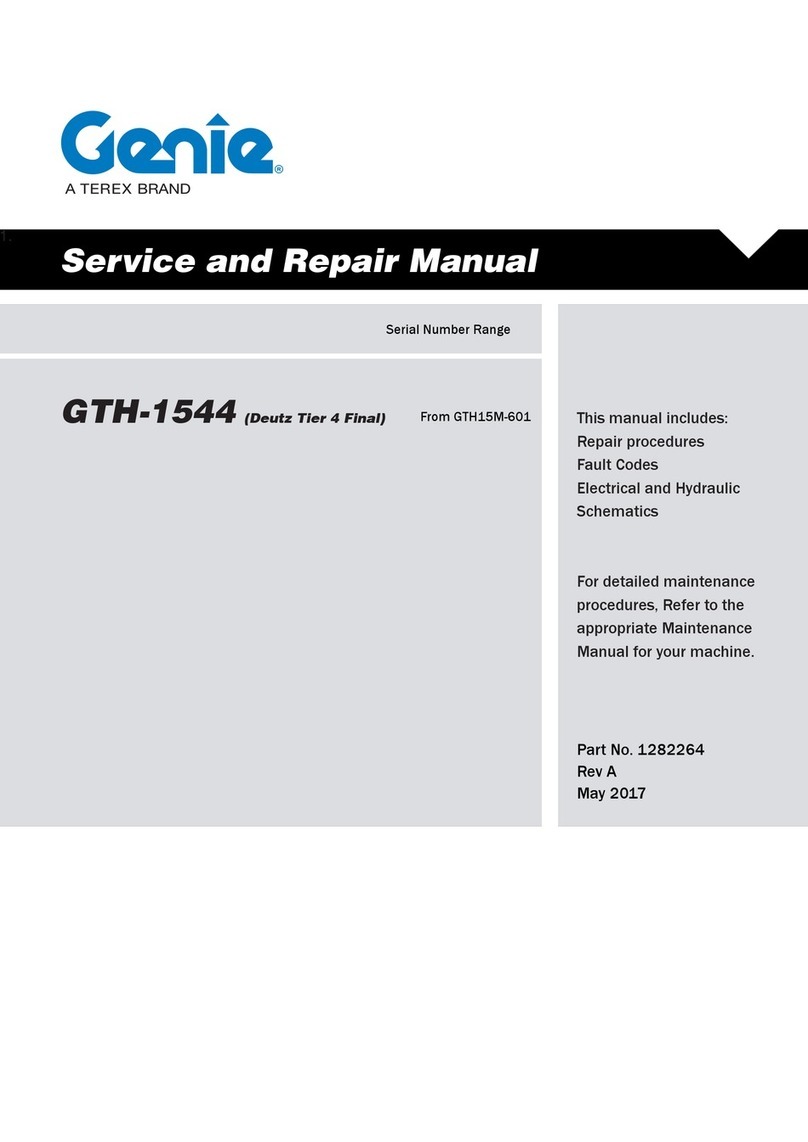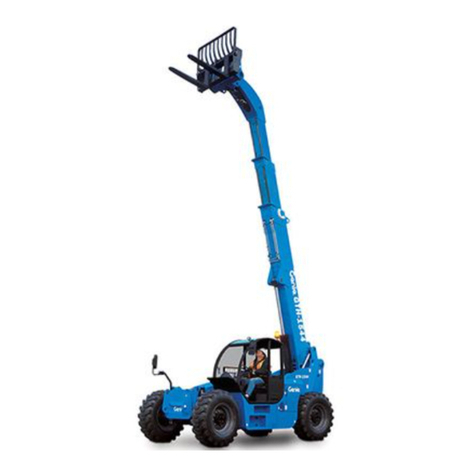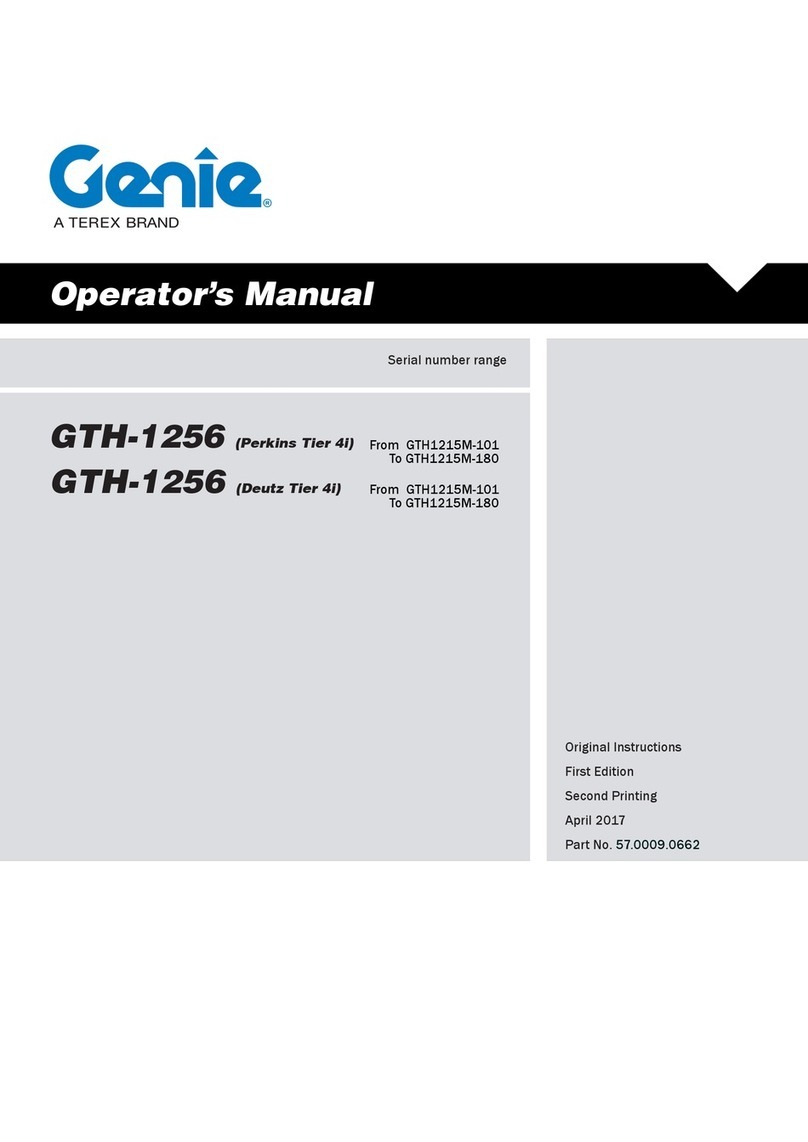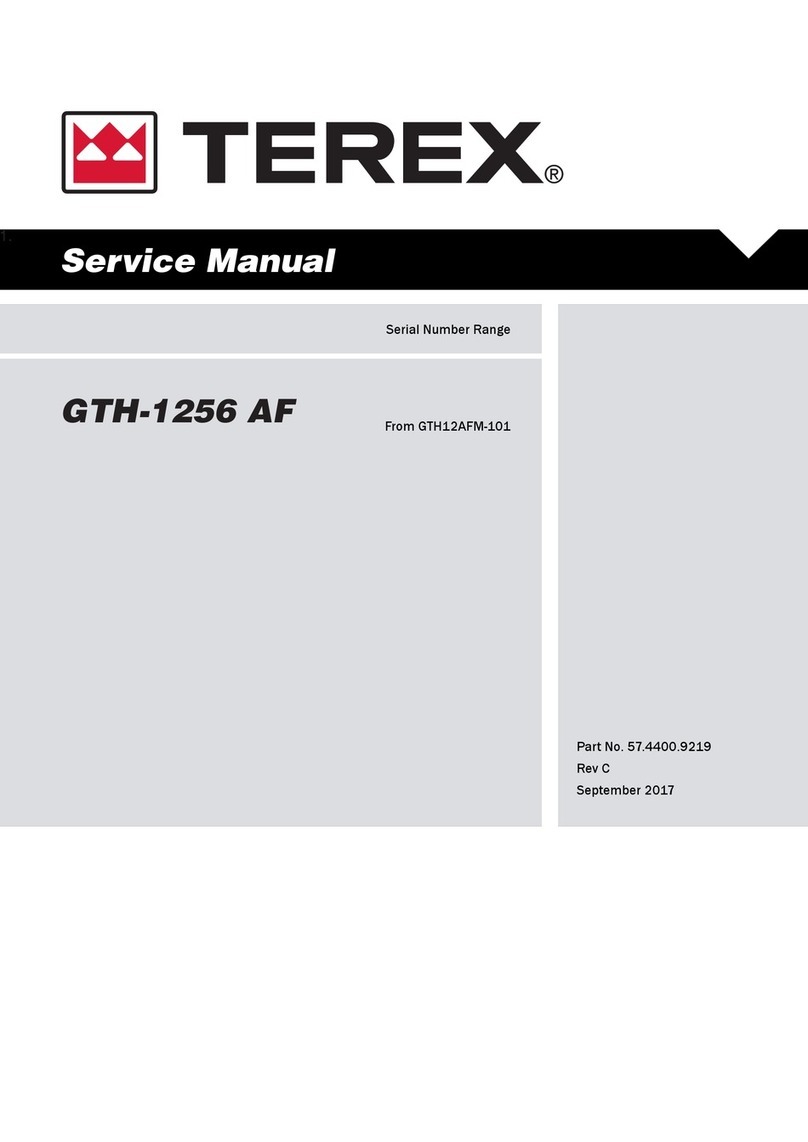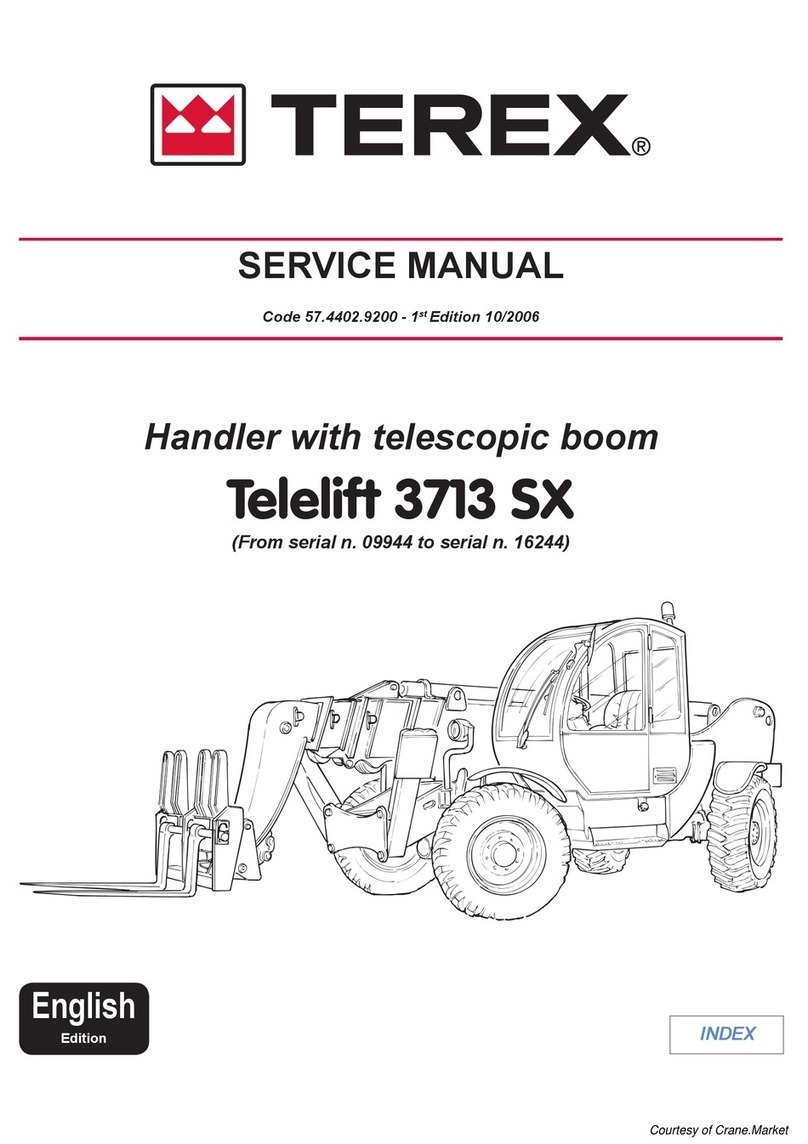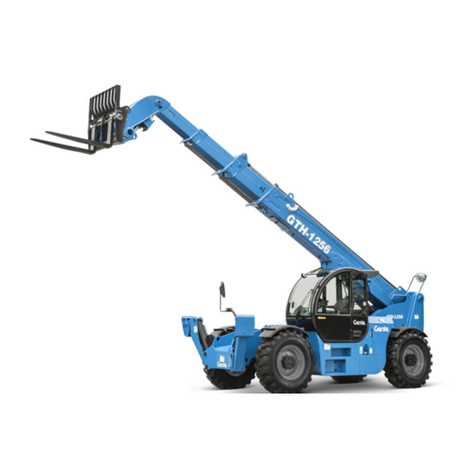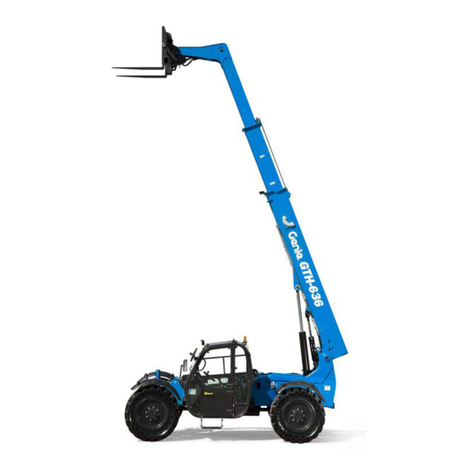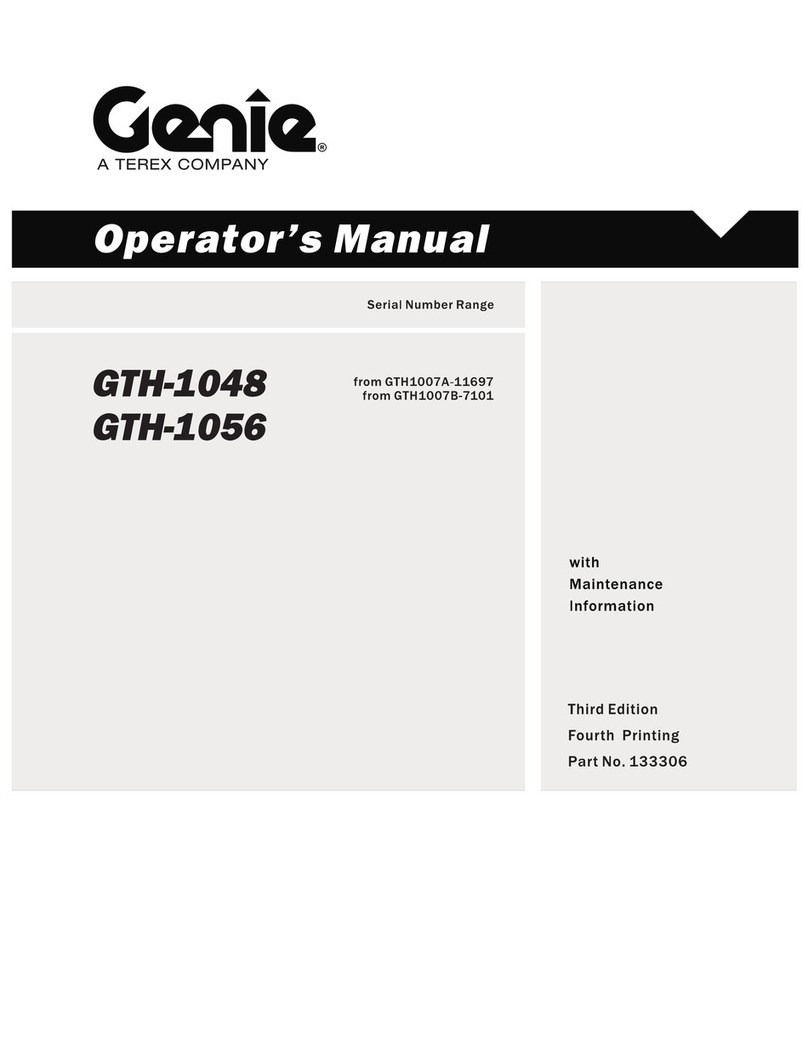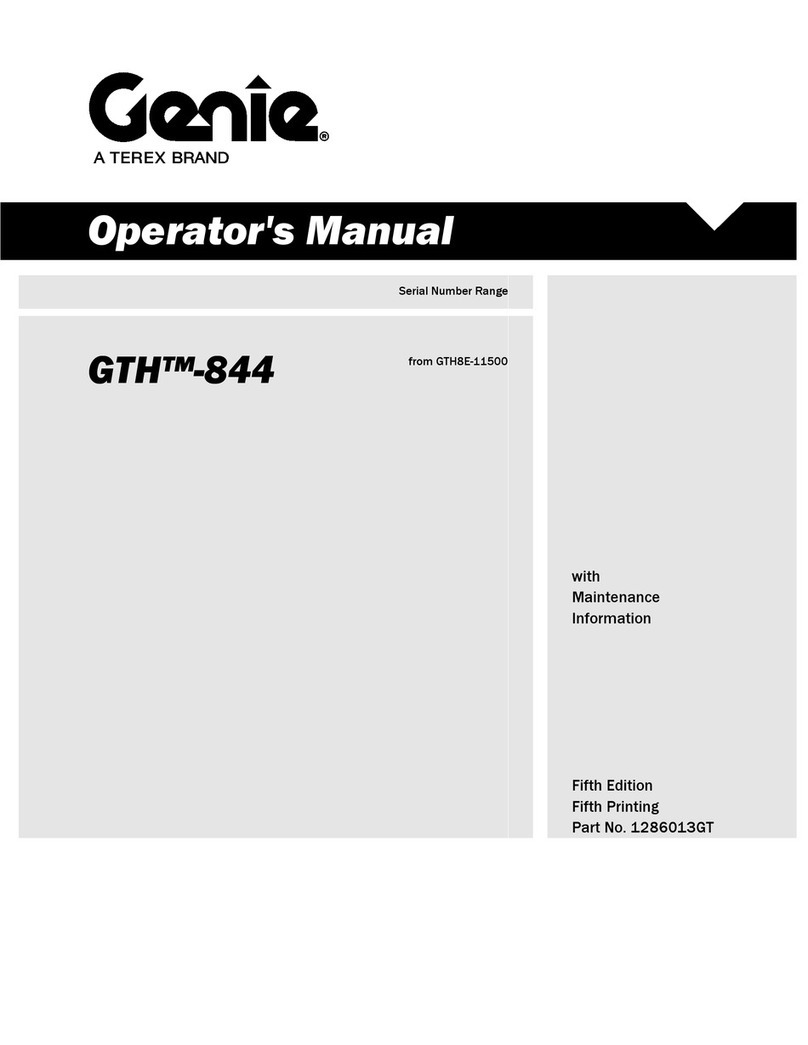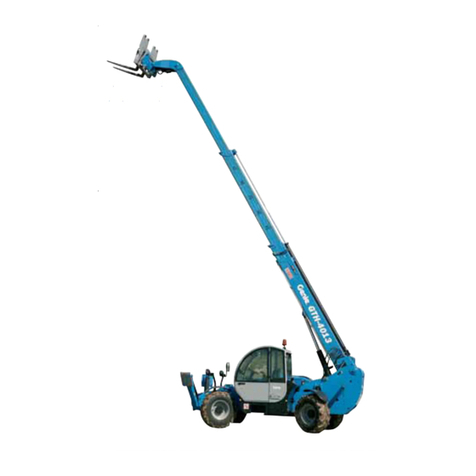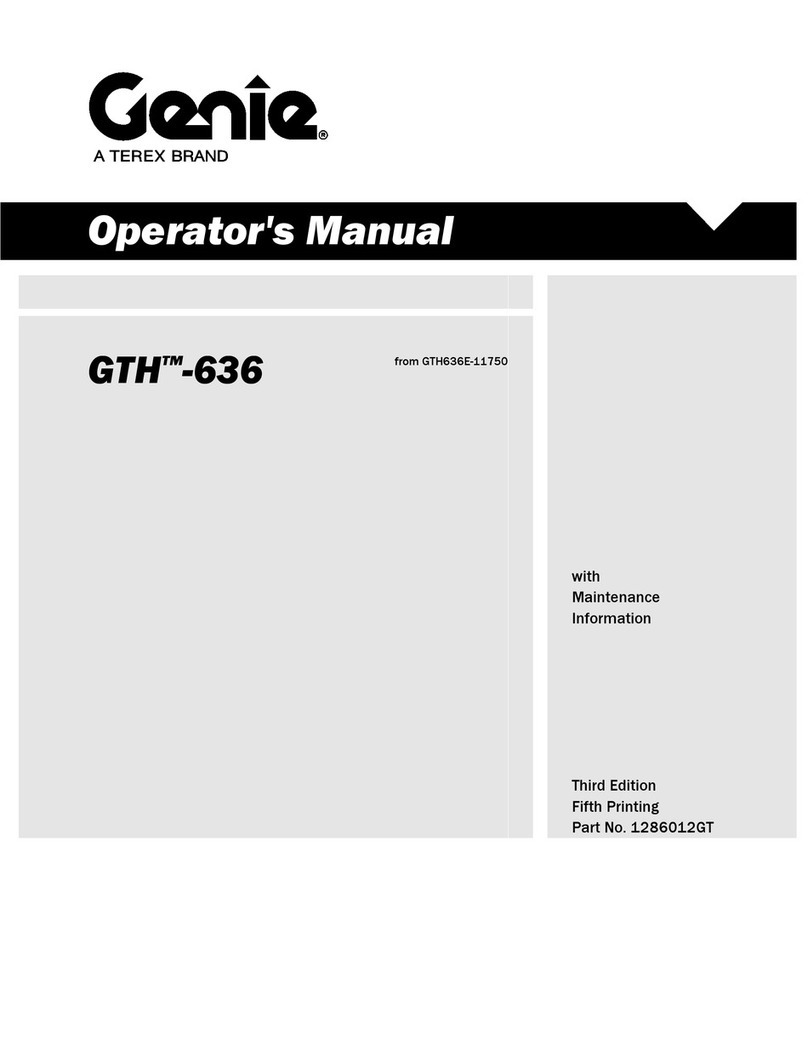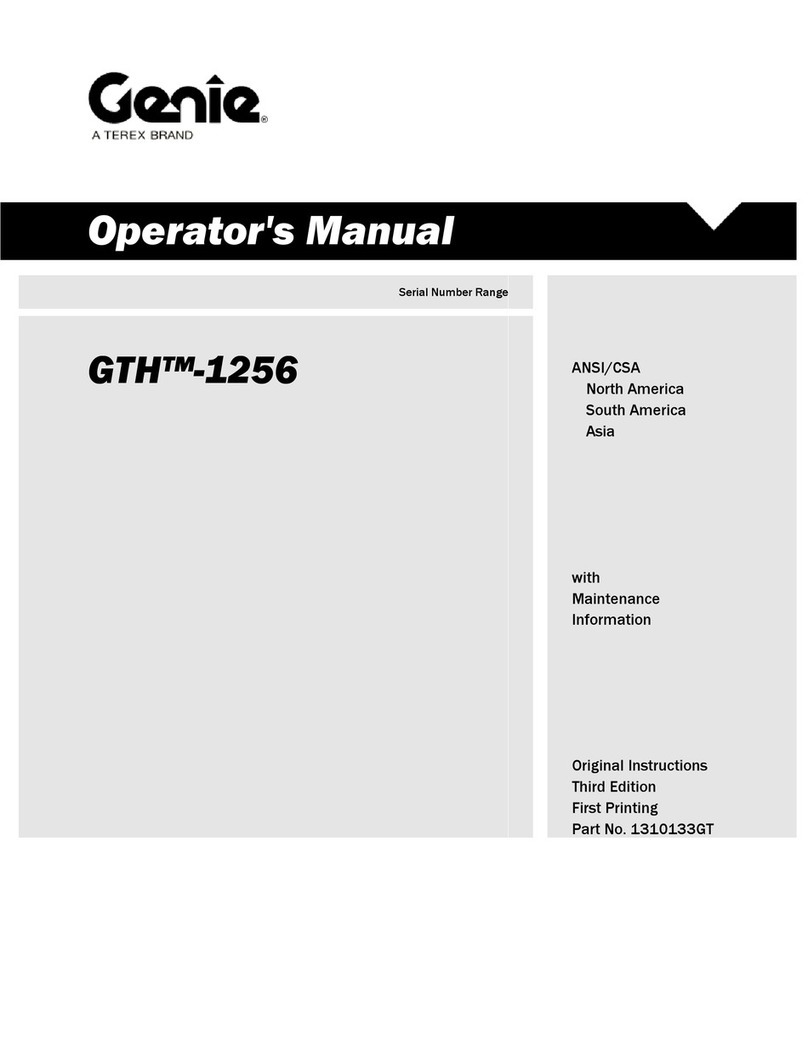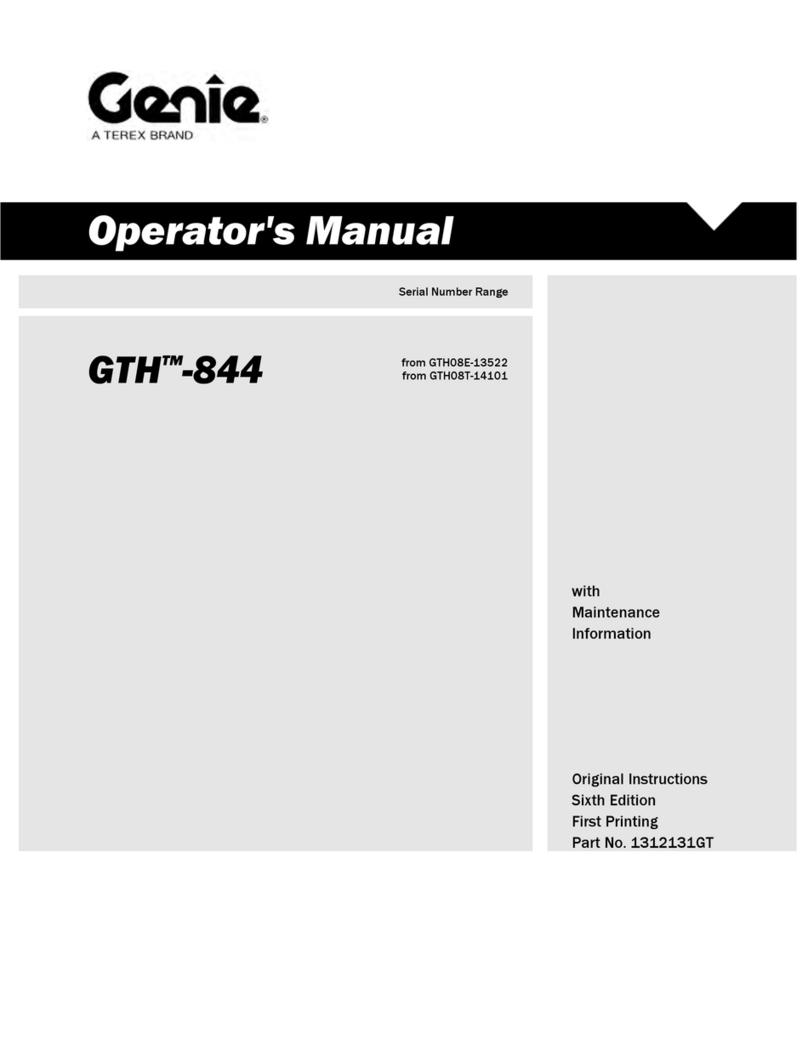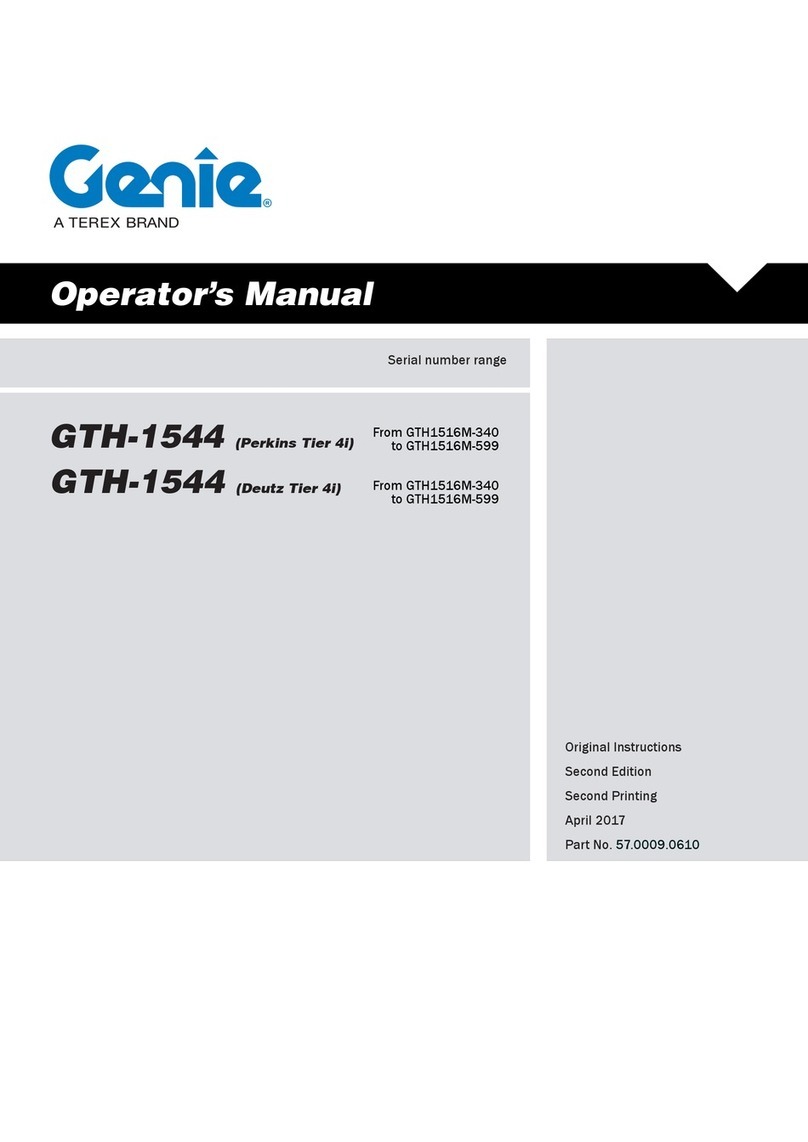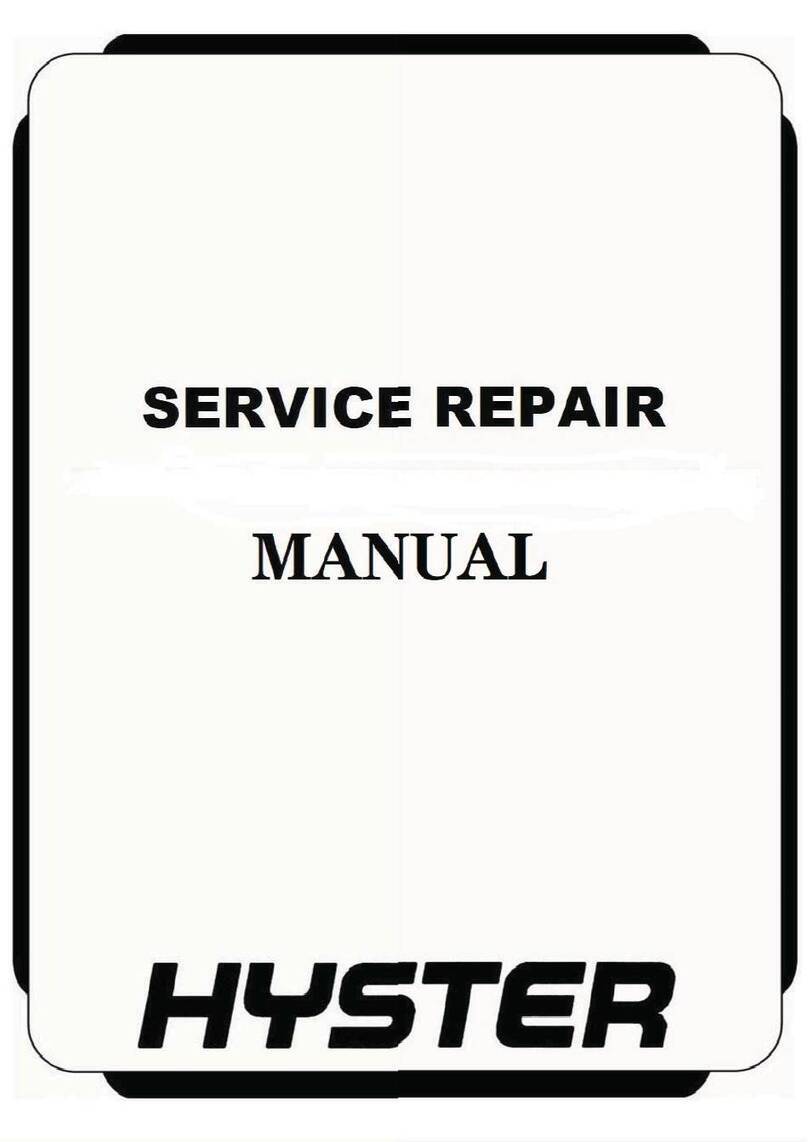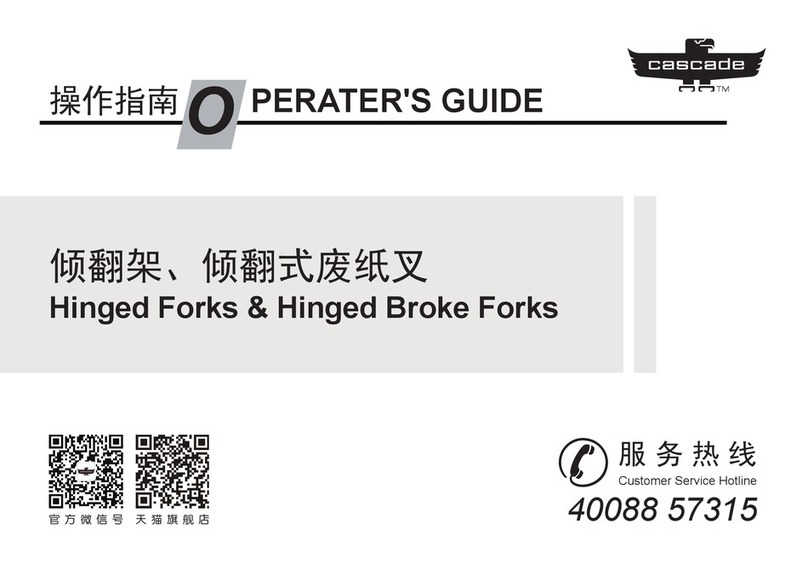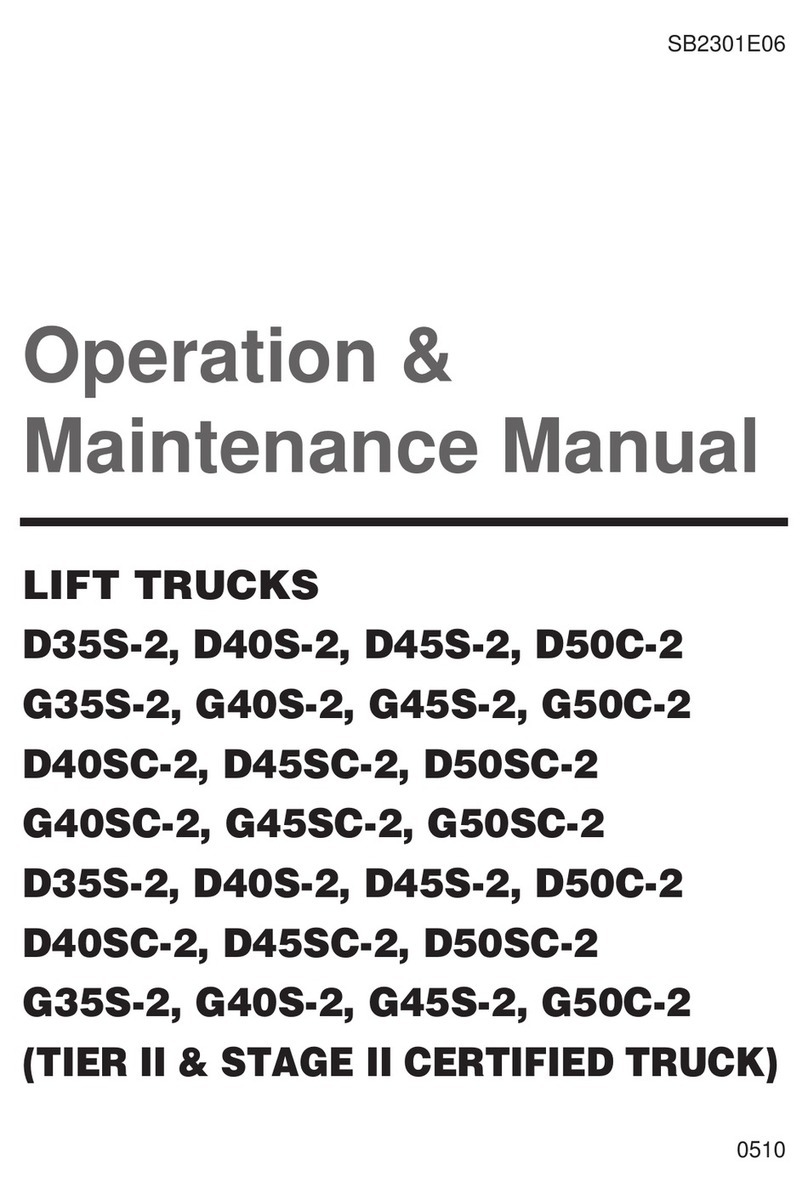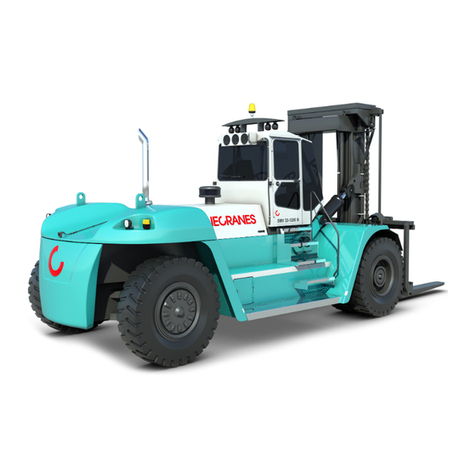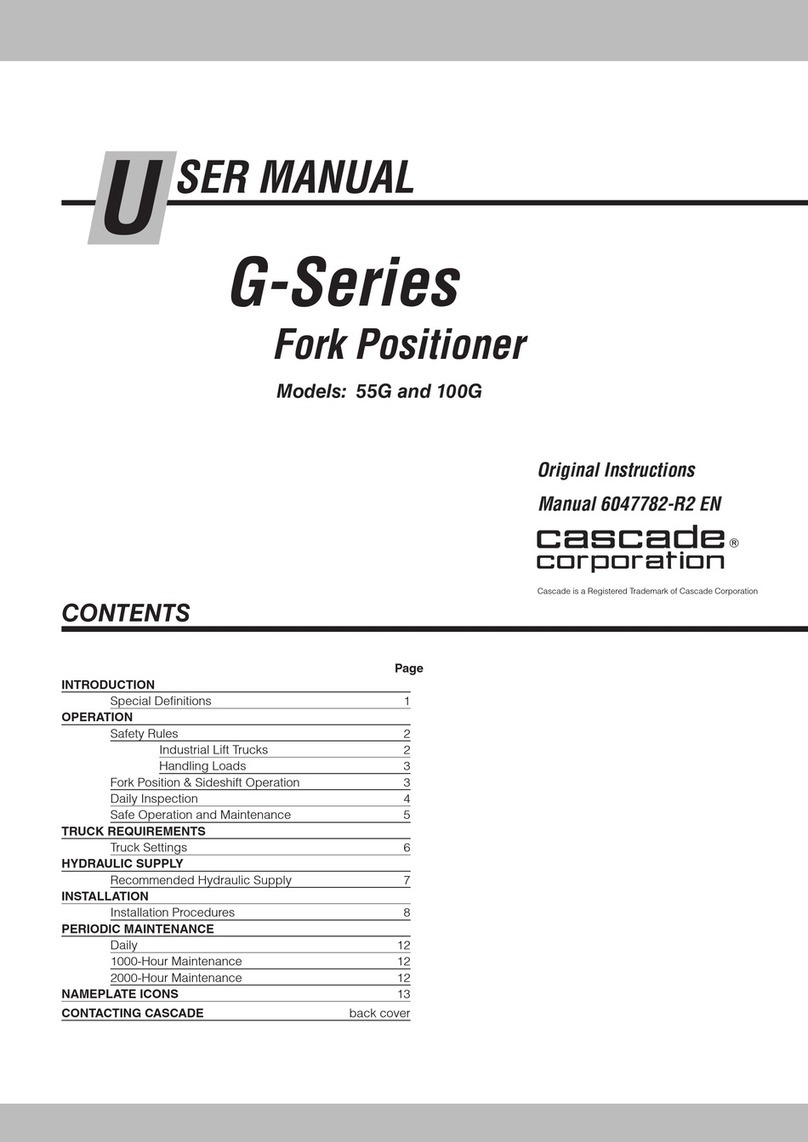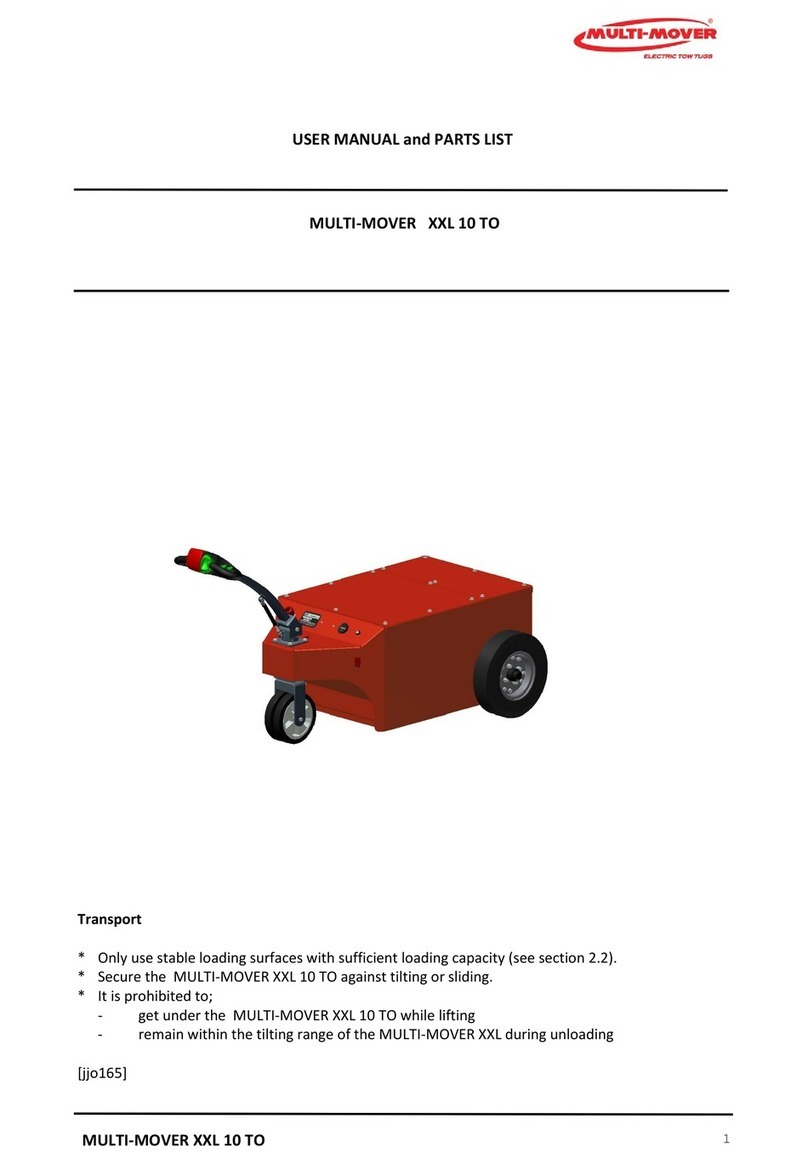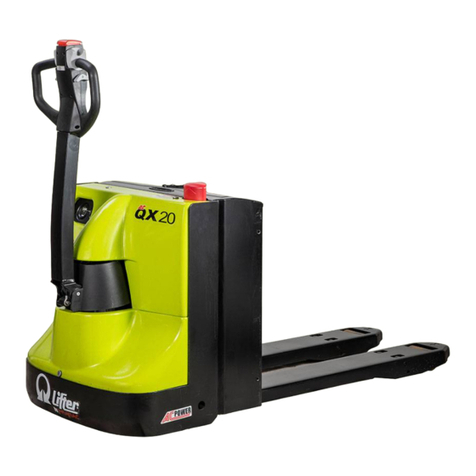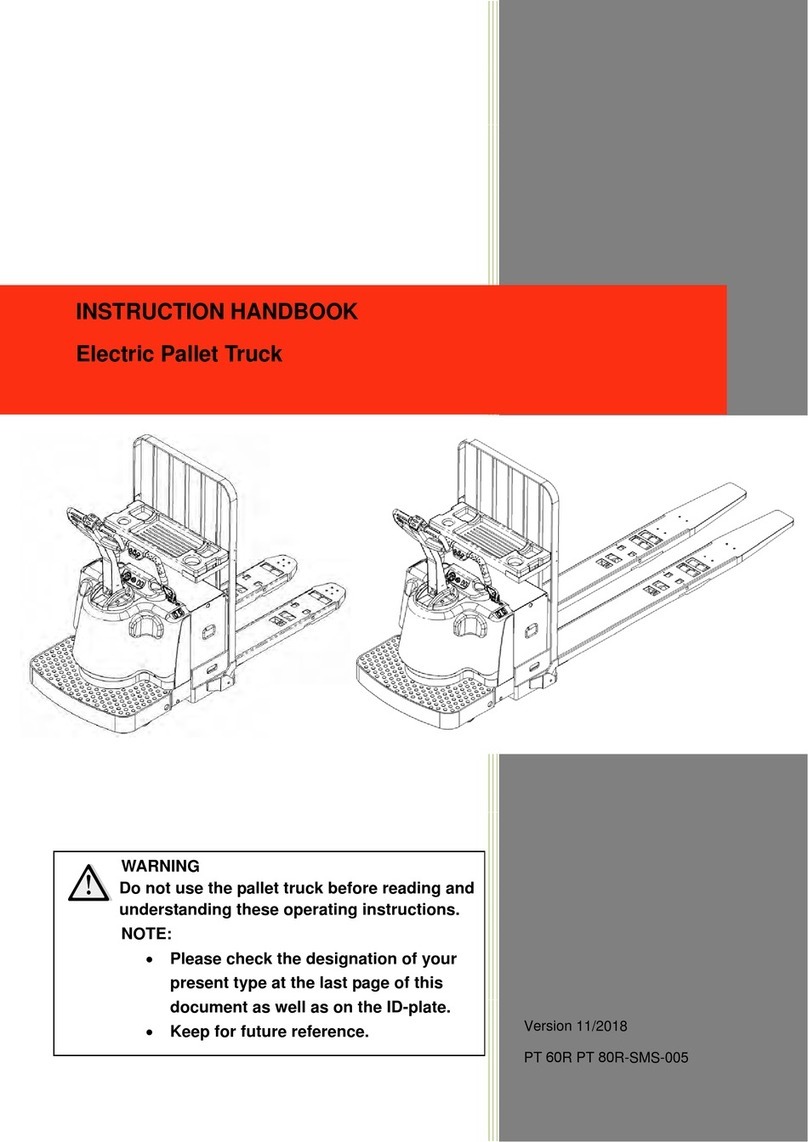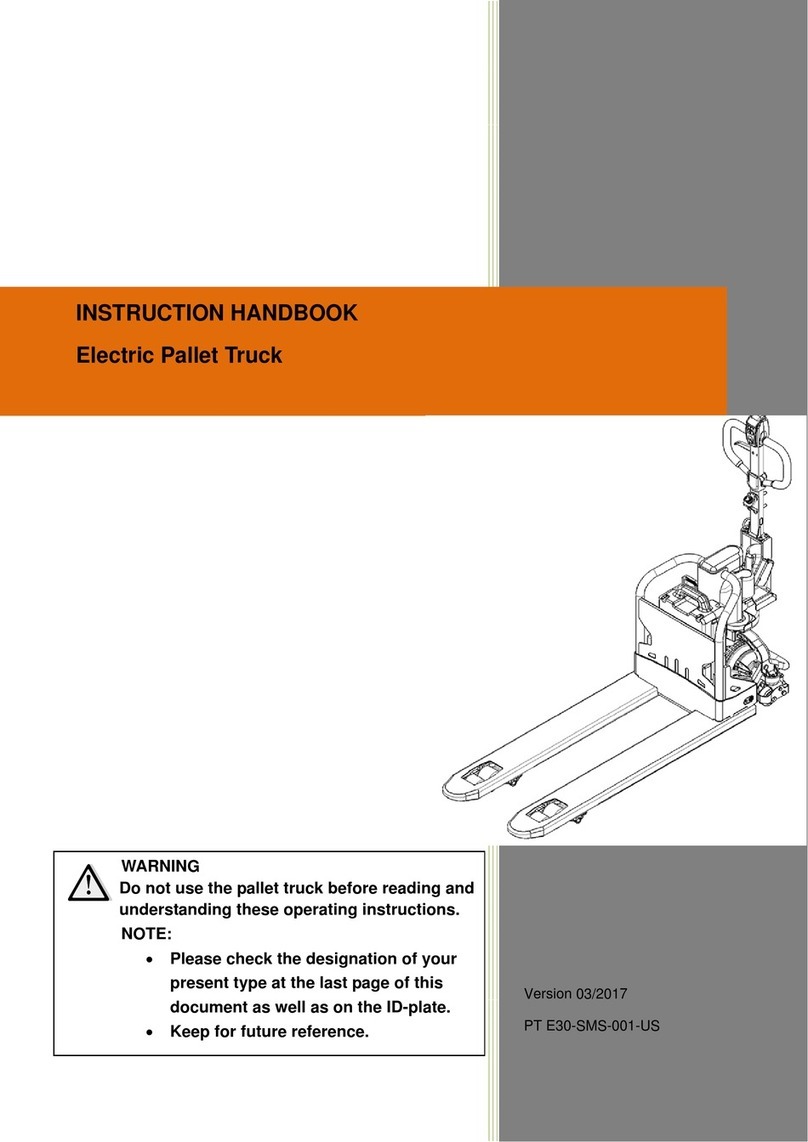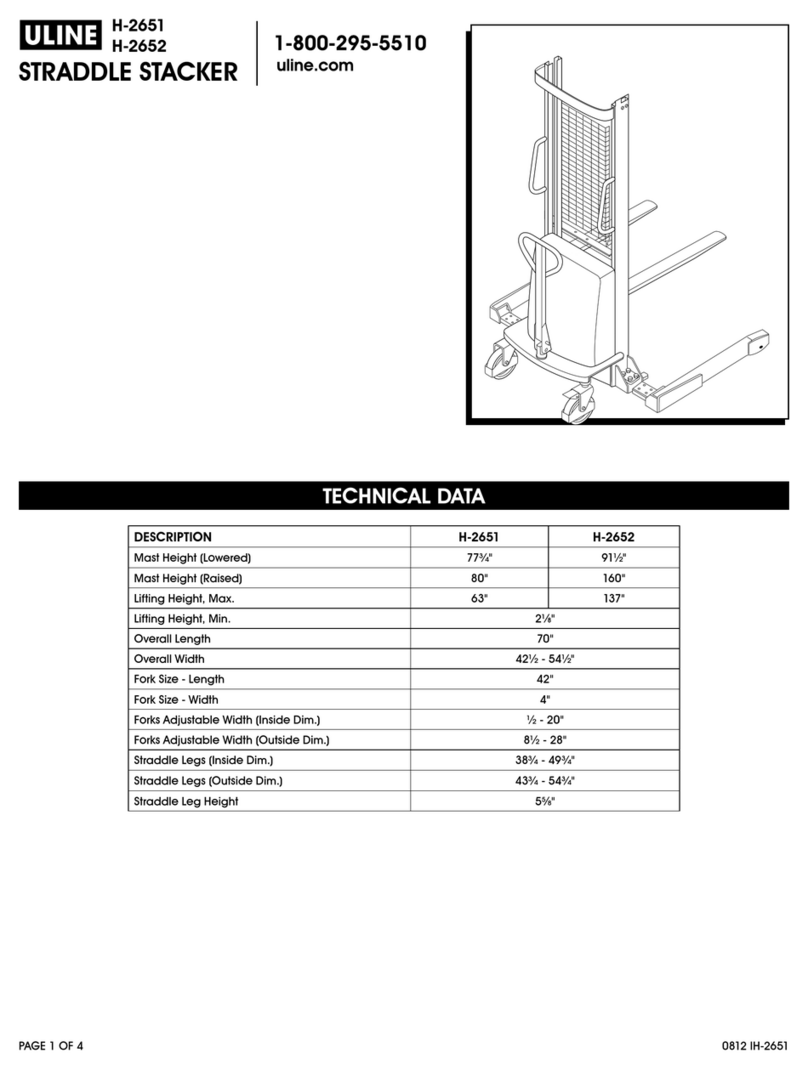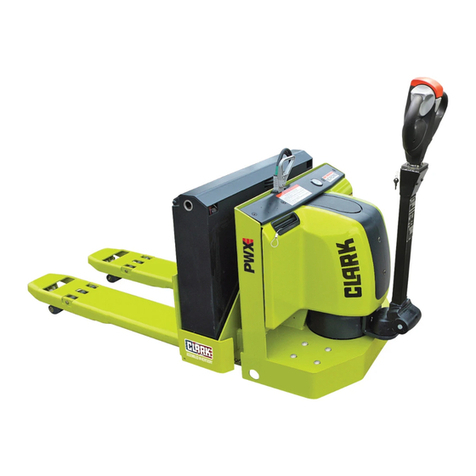
Operator's Manual Eighth Edition • Third Printing
Introduction
2 GTH™-1056 Part No. 1303144GT
Bulletin Distribution and
Compliance
Safety of product users is of paramount
importance to Genie. Various bulletins are used by
Genie to communicate important safety and
product information to dealers and machine
owners.
The information contained in the bulletins is tied to
specific machines using the machine model and
serial number.
Distribution of bulletins is based on the most
current owner on record along with their
associated dealer, so it is important to register
your machine and keep your contact information
up to date.
To ensure safety of personnel and the reliable
continued operation of your machine, be sure to
comply with the action indicated in a respective
bulletin.
To view any open bulletins for your machine, visit
us on the web at www.genielift.com.
Contacting the Manufacturer
At times it may be necessary to contact Genie.
When you do, be ready to supply the model
number and serial number of your machine, along
with your name and contact information. At
minimum, Genie should be contacted for:
Accident reporting
Questions regarding product applications and
safety
Standards and regulatory compliance information
Current owner updates, such as changes in
machine ownership or changes in your contact
information. See Transfer of Ownership, below.
Transfer of Machine Ownership
Taking a few minutes to update owner information
will ensure that you receive important safety,
maintenance and operating information that
applies to your machine.
Please register your machine by visiting us on the
web at www.genielift.com or by calling us toll free
at 1-800-536-1800.
